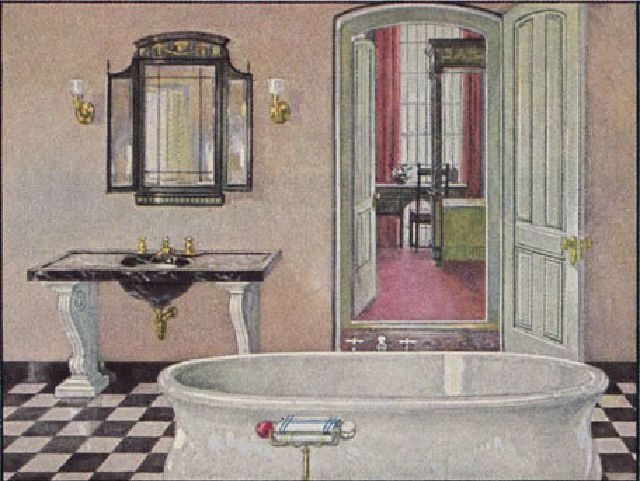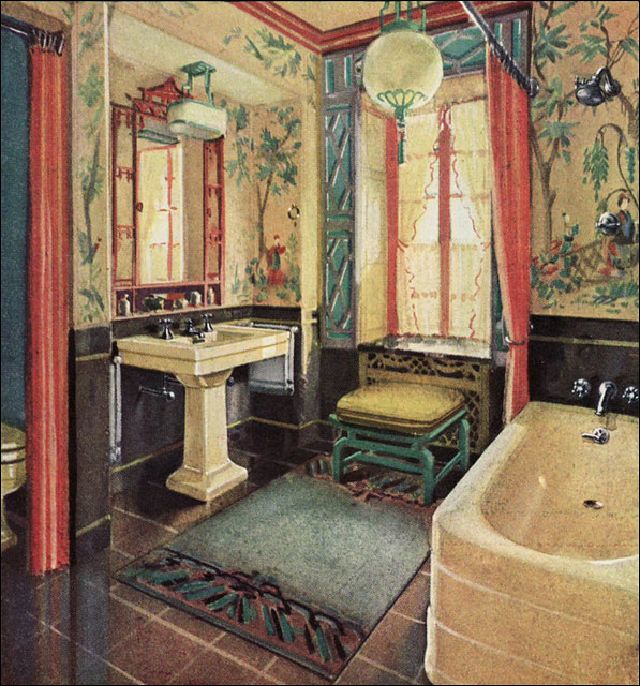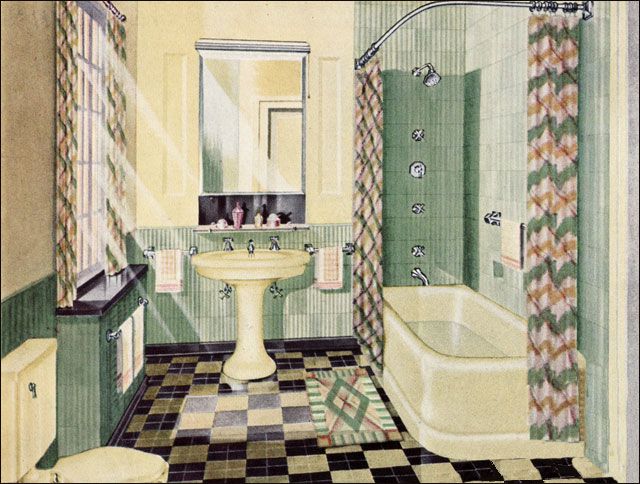The 1920s, often referred to as the “Roaring Twenties,” was a decade of contrast, marked by economic prosperity, cultural dynamism, and technological advancement. This transformative era also left its stylish fingerprint on interior home designs, particularly in one of the most private and functional spaces: the bathroom.
The Birth of the Modern Bathroom
The 1920s heralded a new chapter in residential interior design. During this period, bathrooms evolved from cramped, purely utilitarian spaces, often tucked away in back corners or upper floors of the home, into showcases of personal style and modern convenience.
This transformation was fueled by several factors. Firstly, technological advancements in indoor plumbing introduced more homes to built-in bathtubs, toilets, and sinks. Secondly, the economic boom provided a larger segment of the population with the financial resources to afford these modern luxuries. As a result, bathrooms became a symbol of modernity and affluence.
A Palette of Opulence and Sanitation
One of the most distinctive features of the 1920s bathroom was its color scheme. The early part of the decade saw the predominant use of all-white bathrooms, reflecting society’s burgeoning obsession with sanitation and hygiene. Influenced by the prevailing belief that white surfaces were germ-free and thus healthier, homeowners opted for gleaming white tiles, porcelain, and paint.
However, by the mid to late 1920s, the trend began to shift. As interior design became an avenue of personal expression and style, bathroom colors started to embrace a broader palette. Seafoam green, pale pink, lavender, and baby blue were popular choices, offering a touch of subdued elegance. Black and white checkered tiles also became a fashionable statement, providing a sharp, sophisticated contrast to the softer tones.
Tiling: A Statement of Style and Hygiene
The extensive use of tile was another hallmark of 1920s bathrooms. With the era’s emphasis on sanitation, tiles were favored for their easy-to-clean surfaces and resistance to bacteria. But functionality wasn’t their only appeal. Decorative arrangements, often featuring intricate borders and patterns, adorned the floors, walls, and sometimes even ceilings of many bathrooms.
Subway tiles, initially used in New York City’s subway stations, became a popular choice for bathroom walls. These rectangular tiles were typically installed in a horizontal brick pattern and often paired with a decorative border of intricately patterned tiles. Hexagonal or penny tiles were common for flooring, prized for their grip and modest elegance.
Fixtures and Fittings: Merging Elegance with Functionality
The 1920s bathroom was a showcase for elegant fixtures that combined beautiful form with practical function. The claw-foot tub, which had been a staple of Victorian-era décor, began to make way for the built-in bathtub with a shower. The inclusion of a shower was a significant novelty and a nod to the increasing pace of life, as people sought more efficient ways to bathe.
Sinks during this era often featured ornate pedestals, reflecting the decade’s affinity for classic architectural forms. The widespread faucet, with separate hot and cold handles, became a common sight, often finished in nickel or chrome, following the trend for a modern, streamlined look.
The affluence of the Roaring Twenties also introduced a sense of luxury and comfort into the bathroom. Plush area rugs began to replace traditional bathmats, and custom vanities with intricate woodwork and elaborate mirrors became a focal point. Even lighting took a glamorous turn, with Art Deco styles featuring geometric shapes and bold lines adding sophistication to the space.



























